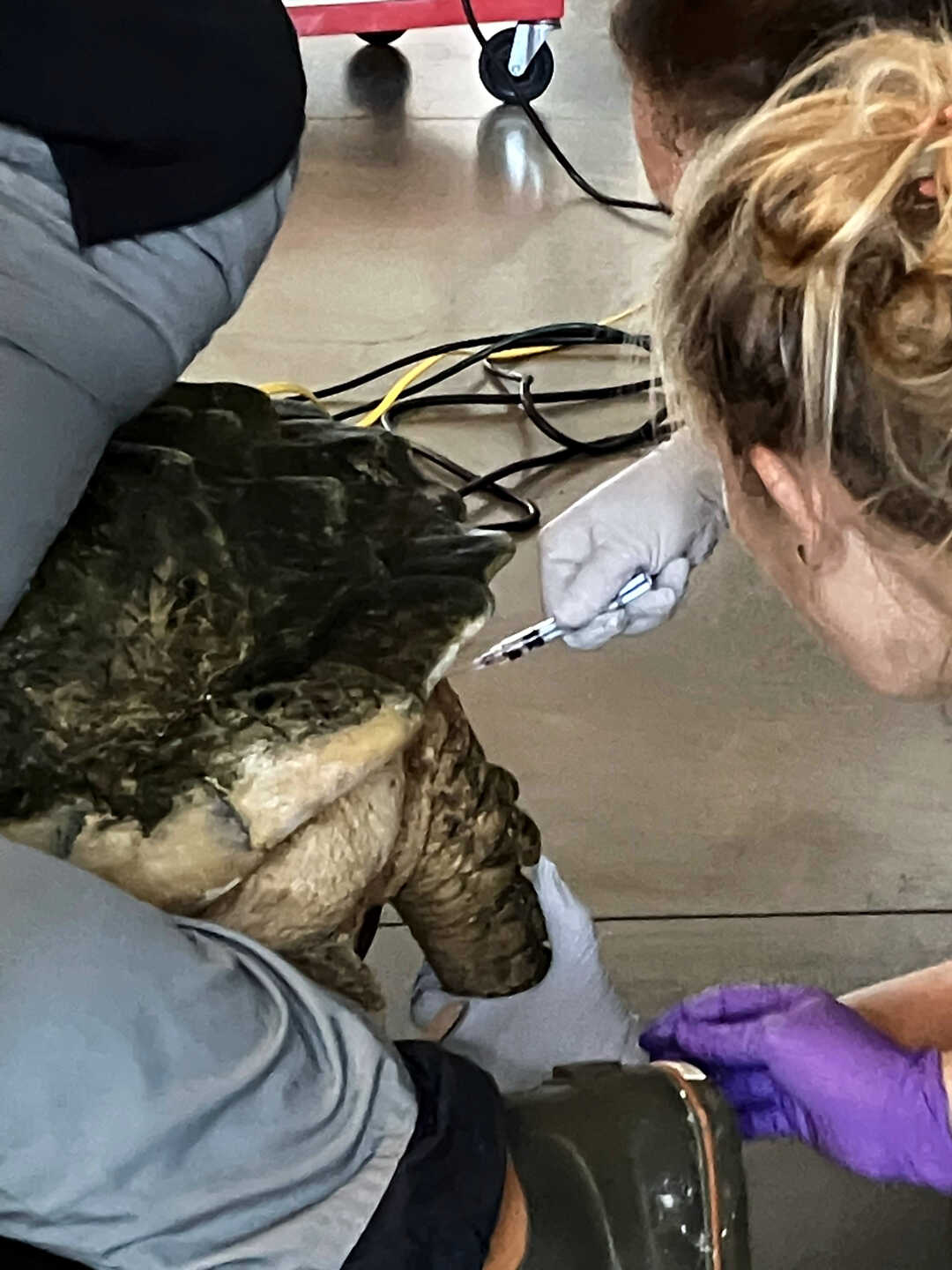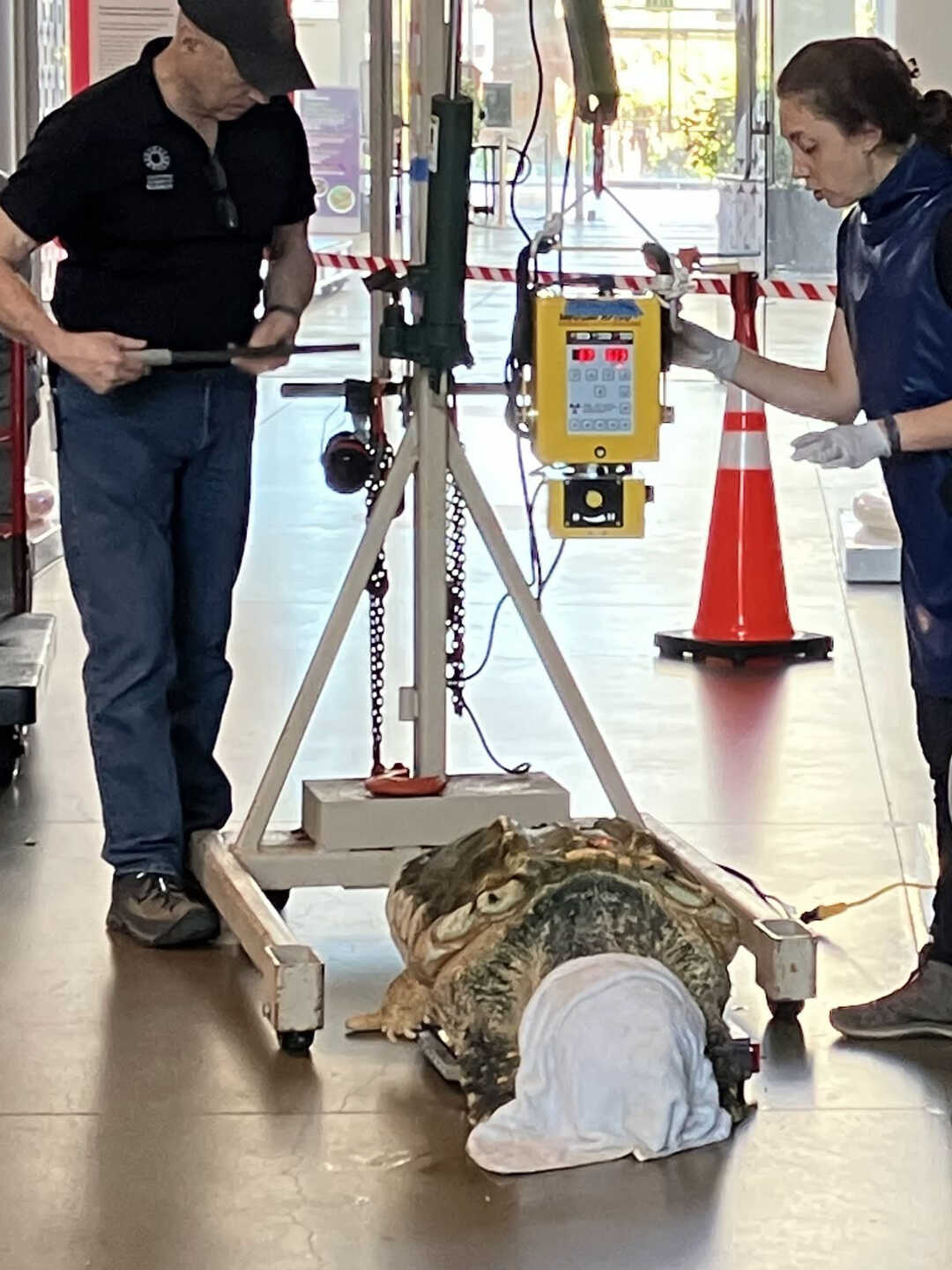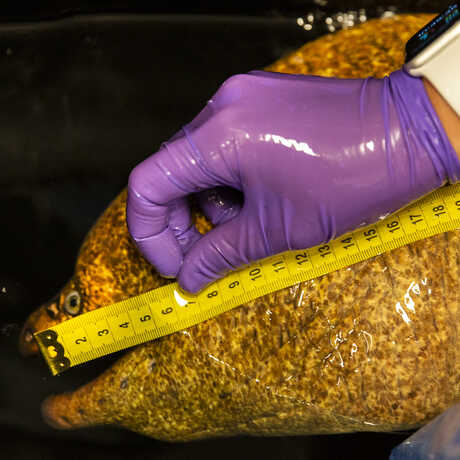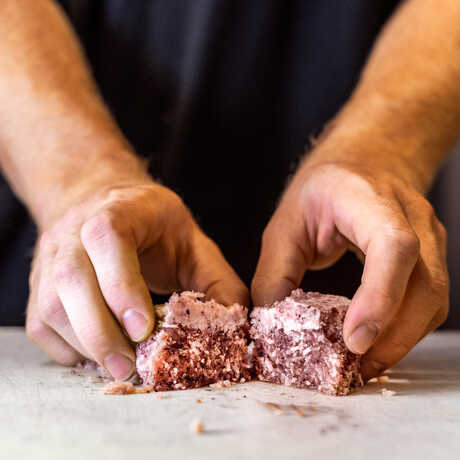The Snappiest Vet Exam

Two hours before the Academy opens to the public, about a dozen people are rushing around with a small crane and a couple of rolling carts above Claude’s Swamp for a tricky veterinary exam. The patients: Morla, Donatello, and Raphael (yes, like the Teenage Mutant Ninja Turtles).
Vet checkups for Claude’s “roommates,” the three alligator snapping turtles (Macrochelys temminckii), are no easy feat for one major reason: There is no door for humans to get into the Swamp where they live.
Once a week biologists use a ladder to get down into the habitat to feed Claude and the turtles. But non-mutant ninja turtles can’t climb ladders, so the veterinarians work with the Animal Health and Facilities teams to remove the turtles for their exams by putting each one in a large white crate and lifting them with a crane to the Academy’s main floor, where the physicals are conducted.
And the human team needs to be snappy, because they must complete the three exams before the museum opens to the public at 9:30 a.m.

Andy Snider, Steinhart Aquarium’s curator of terrestrial animals, is the turtle taskmaster, directing the crane crew and veterinary team members who are rolling the turtles around on carts. “The exams are a workout,” Staff Veterinarian Lana Krol quips.
The turtle checkups follow nearly the same routine as the exam for the Academy’s most challenging vet checkup, the moray eel: measure weight; take blood sample; ultrasound; and finally X-rays to check the turtle’s bones and viscera (the soft internal organs of their body, mostly in their abdomen).
Alligator snapping turtles are North America’s largest freshwater turtle. Morla, the largest of the Academy’s three turtles, lives up to that distinction, weighing in at a hefty 152 lbs. The lightest is Raphael at 71 lbs. and Donatello is in the middle at 76 lbs.

Dr. Darbi Jones, a veterinary fellow from UC Davis, helps take blood from the tail of Morla. Another person is needed to gently sit on the turtle to ensure it stays still during the exam.

Jeff Noll, operations shop supervisor, and Biologist Olivia DaSilva prepare Morla for X-rays. A towel covers her head to help keep her calm, similar to how a cat owner drapes a towel over their pet’s crate at the vet.
The Animal Health Department team uses a portable X-ray machine typically used to examine horses “stall-side,” Krol explains. At the Academy, the vets are using the X-ray “swamp-side.”
The team has a little trouble getting the X-ray beam through the thick shell of the Morla, who as the largest of the turtles is also the most dominant of the trio. Eventually, after a couple attempts, a clear picture of Morla's insides materializes.
“The turtles have a very strong social hierarchy, with lots of nipping and bickering,” says Krol, adding that they mostly get along with Claude, the albino alligator who shares their habitat. The turtles, all females, have been at the Academy since 1972. According to Academy lore, they were discovered in a crate at San Francisco International Airport by U.S. Fish and Wildlife officers, who intercepted them en route to a local restaurant.
Prehistoric-looking alligator snapping turtles have lived on Earth for over 90 million years, going back to the time of dinosaurs, and each individual can live more than 100 years. The Academy’s trio has been with the institution longer than our current record-keeping system, but we do know that Morla has had 11 veterinary exams since 2007. In this latest round, they all got a clean bill of health.
After the exam is over, the team coaxes the turtles one at a time back into a large white crate, connects the crate to the crane, and hoists it down into the Swamp. Gaiter-clad biologists are standing by in the Swamp to open the crates and usher the turtles back into their watery home.

By 9:16 a.m.—14 minutes before opening—the crane is lifting the last empty crate from the Swamp and biologists are wheeling the carts away from the public floor. Morla, Donatello, and Raphael have reunited with Claude. When the first morning guests lean over the railing to check on Claude and his snapping swampmates, they have no idea that they are standing in what was a bustling makeshift veterinary clinic less than 30 minutes earlier.




